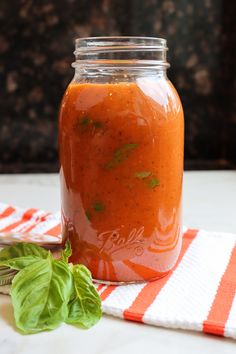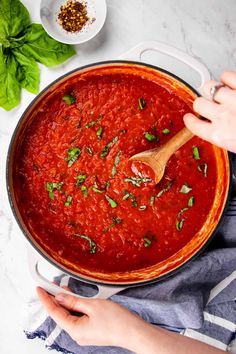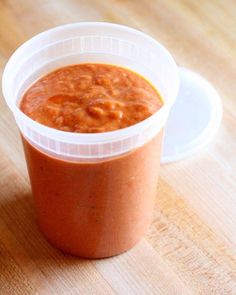Marinara Sauce or Tomato Sauce: Which Is Better?

An excellent pasta, pizza, or even dinners with meat marinated in a delicious sauce produce excellent mouth-watering foods. Italian cuisine offers a wide range of sauces produced with the highest quality ingredients, resulting in a product that speaks for itself.
We are all aware of the Italian tomato and marinara sauces, along with various foods. These sauces may be found in jars at grocery shops or markets and many recipes while preparing lunch or supper.
It’s also worth mentioning that each of these sauces has a specific use for a specific cuisine. This raises an intriguing question: are marinara sauce and tomato sauce interchangeable, and why are they used in different dishes?
What is the distinction between Marinara Sauce and Tomato Sauce? The primary distinction between them is their texture. Even though they are both made of tomatoes, they are not the same thing. Furthermore, each sauce has a different use and preparation method.
Continue reading the article to learn how to prepare the finest marinara and tomato sauces at home, as well as the distinctions between the sauces.
Marinara sauce

Marinara sauce is juicy, tasty, healthful, and simple to prepare. This style of sauce may be paired with a variety of quick-to-prepare foods. This sauce goes well with a wide variety of pasta and pizzas.
Another thing to know about marinara is that it is pretty inexpensive and readily made at home. Its ingredients are not difficult to get by in marketplaces, and we typically keep them on hand in our kitchen.
Next, continue reading the post because I’ll explain how to produce the greatest homemade marinara sauce and where it comes from.
Origins:
The marinara sauce’s roots may be traced back to Naples. According to legend, the name was given by seafarers who came from Italy to America and discovered fruit and tomatoes in the 1700s.
According to legend, mariners used the ingredients they had stored on their ships. Furthermore, the authentic marinara sauce has a fresh tomato flavor and a very delicate texture.
Homemade marinara:
If you want to use fresh tomatoes from the market, you may produce a superb marinara sauce at home using fresh ingredients. All you need are the following:
Whole San Marzano or plum tomatoes must be crushed by hand or run through a food mill. If you don’t have fresh tomatoes available, you can use canned Italian tomatoes instead.
When the texture becomes loose, season with lots of garlic or as much as you prefer, and then add crushed red peppers and basil. Oregano is included in many variations of the sauce.
After completing all of the preceding stages, the sauce must be cooked for at least thirty minutes in a pan.
There are numerous variations to the marinara sauce used when cooking it, such as olives, capers, or wine. The typical Italian marinara sauce is thin, but the American version is thick.
This sauce has no meat, onion, anchovies, tomato paste, cheese, or butter. If you add these ingredients, you will be preparing bolognese or a sauce for spaghetti or other meat-based dishes, which is not what marinara is meant for.
Tomato sauce
The texture of tomato sauce is rich, dense, and thick. On the one hand, tomato sauce may be used with pasta and pizza, but on the other hand, it is a vegetable sauce.
It has components comparable to Ragu and other sauces that pair well with meat-based recipes. To make an excellent marinated supper, add pig, chicken, or other sorts of meat. Tomato sauce may also be used to make pizza and pasta more luscious.
This sauce is also available in jars at the store, but nothing beats homemade, always nicer and fresh. Continue reading to learn about the sauce’s history and how to create it for yourself.
Origins:
Bernardino de Sahagun, a French priest from Spain, was the first to introduce tomato sauce. The tomato sauce with a pasta dish, on the other hand, first appeared in 1790 in the cookbook L’Apicio Moderno, published by a Roman chef called Francesco Leonardi.
In Italy, this sauce was previously recognized as a love medicine, and it was used to replace pepper preserves in the 16th century.
Homemade Tomato Sauce:

As previously said, tomato sauce complements practically every dish, particularly those including meat. If you don’t want to waste fresh tomatoes, you can always prepare a tasty sauce with them. You only need to grind the tomatoes and cook them in a skillet.
This sauce is simple and can be completed in about 30 minutes.
Follow these steps:
To begin, heat olive oil in a saucepan over medium heat. Then add the onion and sauté it. If you’re making a meat-based dish, put the meat first and let it simmer alongside the sauce.
Stir in the garlic, oregano, and basil for a minute before adding the tomato paste. If you want your sauce to be hot, add as much chili as you desire.
You may also add a splash of wine to the pot for more texture and flavor. Stir once more.
Another thing you should add is sugar, which will help to neutralize the acid. Bring to a boil, then decrease the heat while the flavors combine to make the ideal sauce.
When you’re finished, whisk in the melted butter and cheese and set aside for a minute to cool. Once this is completed, your sauce is ready to serve.
You may also add a splash of wine to the pot for more texture and flavor. Stir once more.
Another thing you should add is sugar, which will help to neutralize the acid. Bring to a boil, then decrease the heat while the flavors combine to make the ideal sauce.
When you’re finished, whisk in the melted butter and cheese and set aside for a minute to cool. Once this is completed, your sauce is ready to serve.
Conclusion: Marinara vs. Tomato Sauce
To summarise, after showing you how to make marinara and tomato sauces, I’d like to point out that the sauces are not the same.
One cannot be used in the other, especially when cooking meat. Both are composed of tomatoes, but the critical distinction is in the texture of the sauces.
On the one hand, there is the marinara, which is thick and simple to make, and on the other, there is the tomato sauce, which is thicker, more complex, and not mainly vegetarian.
Even the sauces sold in jars in supermarkets indicate which sauce goes with which type of cuisine. When purchasing sauces, use caution to avoid purchasing the incorrect one.
Related questions:
What exactly is the distinction between ketchup and marinara sauce?
Ketchup has a variety of spices, whereas marinara sauce does not. The main distinction between them is the usage of sugar. Sauces, in general, do not include sugar, but ketchup does.
Can you use tomato sauce for pizza sauce?
You certainly can. Even though pizza sauces are not generally composed of tomatoes, tomato sauce can be used as a replacement.
Tomato sauce is formed from tomatoes and herbs, and it may enhance the flavor of your pizza.











